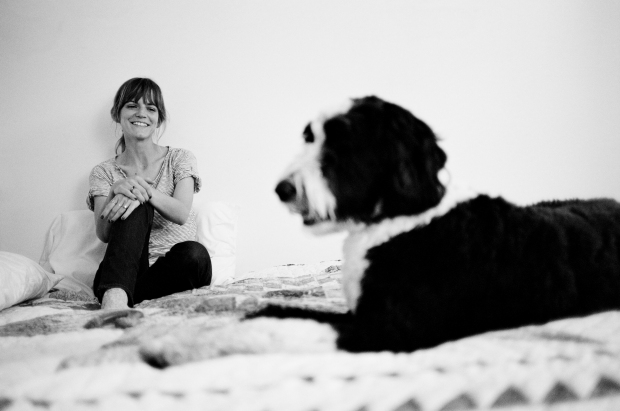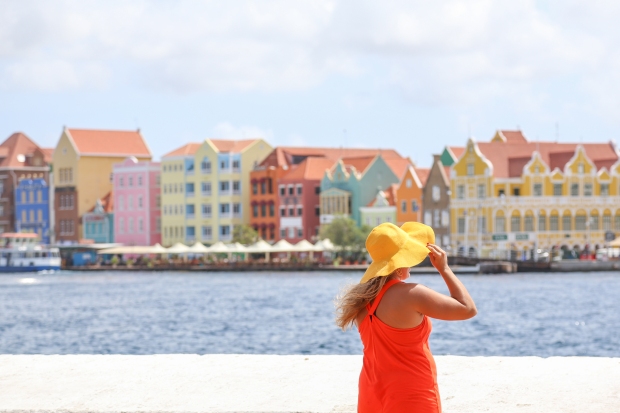 As a remote writer, I connect with all sorts of talented freelancers through the interwebs. Recently Boulder, Colorado journalist Sarah Protzman Howlett and I found one another and connected over our mutual love of writing and Colorado. While Sarah does a variety of editorial work from writing to copy editing, I wanted to focus this week’s Q&A on one of her specialities — writing for trade publications. Trade publications are a different beast than consumer publications, so I figured this would be a nice opportunity for Sarah give us a little background on the trade pub world.
As a remote writer, I connect with all sorts of talented freelancers through the interwebs. Recently Boulder, Colorado journalist Sarah Protzman Howlett and I found one another and connected over our mutual love of writing and Colorado. While Sarah does a variety of editorial work from writing to copy editing, I wanted to focus this week’s Q&A on one of her specialities — writing for trade publications. Trade publications are a different beast than consumer publications, so I figured this would be a nice opportunity for Sarah give us a little background on the trade pub world.
Publications you’ve worked with: WWD, Oprah, Prevention, 5280, 5280 Health, 5280 Home, Colorado Health & Wellness, and a slew of trade magazines you’ve never heard of.
1. Tell us about your journalism background. How did you get your start in the industry?
After I graduated from the Missouri School of Journalism, my first job was on the copy desk at The Daily Sentinel in Grand Junction, Colorado. After 18 months, I took over for the arts and entertainment reporter, where I covered music and theater, and appeared on TV, radio, a web series, and wrote a column about being single in a small town.
After a few years, I got the New York City bug and, once there, caught a lucky break with an assistant job at a men’s fashion trade that folded in 2008. Unbeknownst to me, my boss was aware we were going under and had already put me up for a job on the copy desk at Women’s Wear Daily (WWD). It was an awfully sad time in journalism, seeing so many colleagues and friends laid off who, frankly, were a lot more talented than I. I worked at WWD until moving to Denver in 2010.
2. How and when did you launch your freelance career?
I freelanced on the side when I lived in Manhattan, often covering home décor and Broadway theater for a free publication called New York Resident. (I think I answered a Craigslist ad to get that gig and was maybe able to pay my utilities with what I earned, but it was sorely needed extra cash!)
In 2010 my then-fiancé, now husband and I felt ready to move on from NYC and move to Denver, near my family. We wanted kids in a few years’ time, so I built up a roster of freelance clients with the idea that I’d be established after a year or so and work part-time once I was a mother. Our twins were born in 2013, and it has been a privilege to have the flexibility that comes with working for myself.
3. It sounds like a bulk of your work and income comes from trade publications. What are trade publications and how did you segue into that world?
It was a total accident. I wrote a piece for a trade magazine in the pool and spa industry to help out a friend who was on its staff at the time. When it ended up losing its associate editor some time later, they called me. I have had that job, working remote, since 2010 and they’ve been very good to me.
4. What kind of subject matter do you write about for trade publications?
I often write trend reports (for instance, new technologies gym owners might consider to boost membership) or profiles on small-business owners. I love talking to anyone who is passionate about what they do; it gets me really interested right away, regardless of whether I’ve never heard of the thing they’re talking about until I started the story!
5. How is working with trade publications different from working with consumer publications?
Instead of, say, a magazine like Shape, which anyone interested in fitness would read, trades are speciality publications for those who make their living in the business of fitness. Where Shape writes about how to flatten your abs, a fitness trade publication might write a feature on the latest fitness equipment, and whether owners/operators who have upgraded have found it worth the investment.
6. Do you have to pitch trade publications the same way you’d pitch a consumer publication?
No. Most trade editors assign to experienced writers who are capable of learning on their feet. They don’t expect most of their freelancers to have the highly specific knowledge about their given industries, so they’ll often help you with sources and industry terminology. I’ve certainly pitched to trades once I’m familiar with an industry’s trends and pressing issues. When I’m interested in writing for a new one, I send an email introducing myself. There are some great LOI (letter of introduction) templates on freelancer websites.
7. What kind of advice do you have for writers who want to work with trade publications? Where can they find trade publications to scope out their content?
Advice: Always focus on your hourly pay and not the per-word. Signing a contract for $2/word feels awesome, but when you’re eight months into reporting and on your sixth revision with your third editor, the hourly can end up pretty bad. (Don’t get me wrong: If you sell a pitch to a huge mag when you’re just starting out, definitely do it. A great clip is a great clip.)
Most trades I’ve written for pay anywhere from $.25 to $1/word, and I’m able to pull in about as much in 10 hours a week as I did as a full-time reporter right out of college. Trades’ lead times are much shorter and their staffs smaller, so there are fewer revisions, you get paid faster, and you can access sources easily because they’re eager to talk up the industry they love (or at least from which they earn a living). Googling “trade pubs for the ____ industry” will yield all the results you need.
8. Other than trade publications, what other kind of writing and work do you do editorially?
I still copy edit a lot. So many newspapers have slashed their copy desks — and you can tell, believe me — but I have copy edited everything from museum newsletters to cookbooks. The skill is highly transferable from my newspaper days and still so valuable. There are innumerable highly intelligent people, experts in their field, who struggle mightily to write a clear, concise sentence that’s correctly punctuated.
9. How do you keep yourself abreast of trends in the ever-evolving media industry?
I read a ton of news and probably too many think pieces about the industry. I don’t consider myself a blindly optimistic person, but I believe to my toes that collectively, we know we benefit from helpful, honest reporting, and that it’s not going anywhere.
10. What are some of your favorite tools as a journalist?
I really like Grammar Girl for those obscure rules I can never seen to remember! And I will always love the AP Stylebook.
11. What kind of things do you do creatively to help yourself unwind?
I love to sew and refinish small pieces of furniture, and I’m constantly tweaking our home’s interior.
Connect with Sarah through her website, Instagram and LinkedIn.





